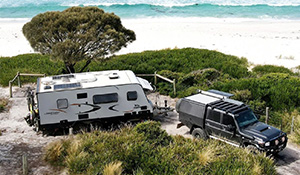Toyota to add 48-volt technology to HiLux
Toyota will introduce 48-volt technology to selected HiLux model grades next year. The new tech, which Toyota specifically don’t refer to as a mild hybrid, allows an engine stop-start system to be added for modest gains in fuel economy, along with other benefits.

The 48V technology will be fitted as standard to the 2024 HiLux SR5 and Rogue dual cab 4x4s with the 2.8-litre turbo diesel four-cylinder engine and six-speed auto transmission. It’ll also be optional on the HiLux SR 4x4 dual cab with the same drivetrain.
The combination of a 48-volt battery, electric motor-generator and other specific components allows an engine stop-start system to be incorporated. This is the key to improving fuel economy by approximately 10 per cent compared to 2.8-litre HiLuxes without the tech. According to Toyota, other benefits of the 48V tech are improved drivability and reduced NVH (Noise, Vibration and Harshness) levels.
Fuel economy for a 2023 HiLux SR5 dual cab 4x4 with the 150kW/500Nm 2.8 turbo-diesel and automatic is 7.9lt/100km on the combined cycle. This rises to 8.4lt/100km for the Rogue dual cab 4x4.

According to Toyota Australia Vice President Sales, Marketing and Franchise Operations Sean Hanley, the HiLux 48V tech will have no impact on performance, capability or the ute’s 3500kg towing capacity, but payload will likely be reduced.
"We are continually striving to reduce the fuel consumption of our vehicles to help reduce on-going costs for customers, as well as helping reduce our environmental impact, and the addition of 48-Volt Technology to our biggest-selling vehicle line will contribute to this," Hanley said.

"This new technology will not only improve fuel consumption, but customers will also benefit from enhanced on and off-road performance, making the HiLux even more appealing for a weekend away or longer term excursion into the outback.”
Further details on the 48V HiLux, including power/torque figures, payload, other specs and pricing, will be released closer to local launch in the first half of 2024.









